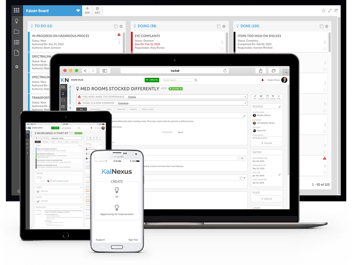 Event reporting, also known as incident reporting, got its start in aviation and healthcare, two types of organizations that are considered high-reliability organizations. It makes sense if something goes wrong with an airplane, or there is a medical error, lives are on the line, and it is essential that the error never occurs again.
Event reporting, also known as incident reporting, got its start in aviation and healthcare, two types of organizations that are considered high-reliability organizations. It makes sense if something goes wrong with an airplane, or there is a medical error, lives are on the line, and it is essential that the error never occurs again.
Today, organizations of all types are adopting the attitude that a problem should never happen more than once. Many are implementing technology to help teams achieve this reality. Lots of providers claim to have support for event reporting, but not everyone has all of the capabilities necessary for it to be effective.
Here are the features that we consider essential when evaluating event reporting solutions.
Integration with Improvement Management
We’re going to start with the most essential thing to consider. Does the event reporting system also have the capabilities to manage the resulting improvement projects? The whole idea of event reporting is to take action to solve the underline issue (corrective action) and prevent it from happening again (preventative measure). That’s why should incidents be reported into a system designed to support the improvement effort that will come next. Here are a few of the reasons that events and improvement should be managed in one integrated platform.
One Place to Go to Report Events and Opportunities for Improvement
You will only need to train your employees on one system where they can report incidents and opportunities for improvement. It becomes the system of record for problem-solving and a single source of the truth with all of the information needed to address issues in one place.
End to End Control and Reporting
With one centralized solution, there is no delay between the reporting of an event and the action to correct and prevent the issue from recurring. This helps ensure that no tasks are missed and gives leaders visibility into the entire process.
Investigation and Action Assignments
A single solution makes it easy to assign people or teams to investigate events and to access the necessary resources to begin and manage the improvement cycle.
Streamlined Notifications and Alerts
One benefit of a single solution for event reporting and improvement is that alerts and notifications are streamlined to reduce noise and make sure everyone gets the information they need and nothing more. Each team member has their own configurable dashboard to make it so they get the data they want quickly and easily.
While we think that integration with improvement capabilties is the number one feature requirement for event reporting software, there are some other important things to look for.
 Available Anytime on Any Device
Available Anytime on Any Device
It’s a handy fact of life in 2019 that most business applications are available over the internet and that many have mobile apps. In terms of event reporting, this is more than a convenience. It is crucial that incidents can be reported as soon as an employee encounters them. You don’t want to run the risk that the issue will be forgotten or that critical details might be lost.
Sophisticated Reporting and Search Capabilities
Leaders must have insight into the type, number, and frequency of adverse events. The best event reporting systems have dashboards that each leader can customize with just the information they need for real-time tracking. It should be easy to sort incidents by location, function, product, or other relevant criteria. Employees should be able to search for past events to learn from what happened and apply fixes that worked.
Impact Measurement
The key to keeping executives and front-line employees alike engaged in improvement is to calculate and share the impact of both events and improvements. If you want people to understand how vital event reporting is to the organization, makes sense to look for a solution that makes it easy to broadcast the results of corrective and preventative actions.

The technology you select should create a straight line between capturing an event and implementing the fix necessary to ensure that it doesn’t happen again. That’s how you create an organization that is a learning machine, always moving forward and tackling new challenges, not repeating the mistakes of the past.
![[Watch Now] Top-Down Improvement Software Demo](https://no-cache.hubspot.com/cta/default/326641/2eef07b8-9131-49c5-9adc-bafb52e8796e.png)



Add a Comment